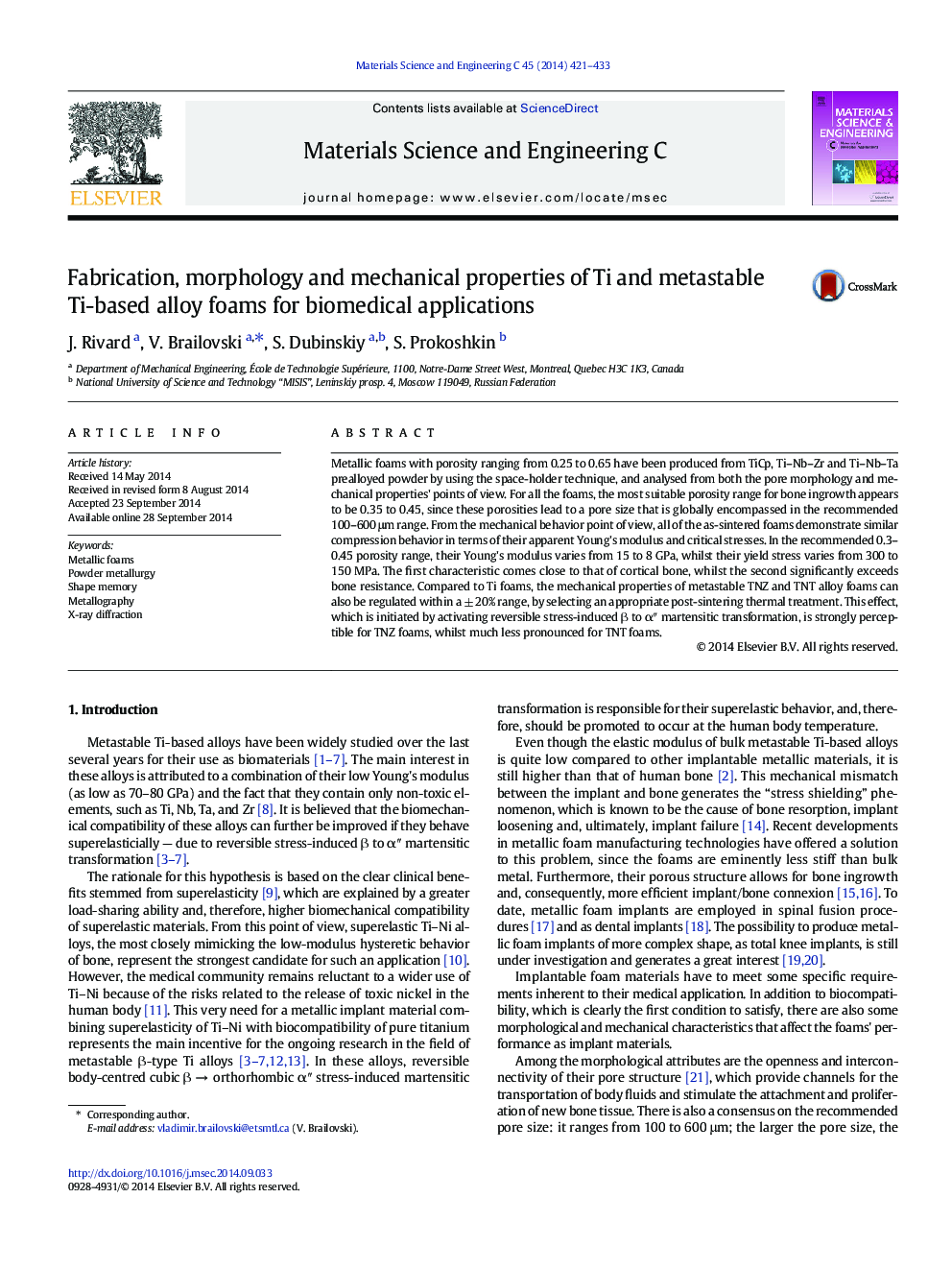| Article ID | Journal | Published Year | Pages | File Type |
|---|---|---|---|---|
| 1428576 | Materials Science and Engineering: C | 2014 | 13 Pages |
•0.25–0.65 porosity TiCp, TiNbZr and TiNbTa metallic foams are manufactured.•The morphology and properties are similar for all the foams in the as-sintered state.•TNZ & TNT foams' behavior can be regulated by post-sintering heat treatment.•The porosity range suitable for bone implant purposes appears to be 0.35 to 0.45.
Metallic foams with porosity ranging from 0.25 to 0.65 have been produced from TiCp, Ti–Nb–Zr and Ti–Nb–Ta prealloyed powder by using the space-holder technique, and analysed from both the pore morphology and mechanical properties' points of view. For all the foams, the most suitable porosity range for bone ingrowth appears to be 0.35 to 0.45, since these porosities lead to a pore size that is globally encompassed in the recommended 100–600 μm range. From the mechanical behavior point of view, all of the as-sintered foams demonstrate similar compression behavior in terms of their apparent Young's modulus and critical stresses. In the recommended 0.3–0.45 porosity range, their Young's modulus varies from 15 to 8 GPa, whilst their yield stress varies from 300 to 150 MPa. The first characteristic comes close to that of cortical bone, whilst the second significantly exceeds bone resistance. Compared to Ti foams, the mechanical properties of metastable TNZ and TNT alloy foams can also be regulated within a ± 20% range, by selecting an appropriate post-sintering thermal treatment. This effect, which is initiated by activating reversible stress-induced β to α″ martensitic transformation, is strongly perceptible for TNZ foams, whilst much less pronounced for TNT foams.
